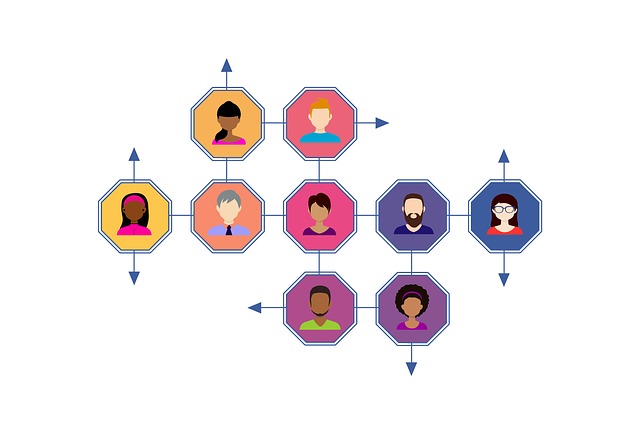
The excitement around marketing analytics and Big Data has gotten so strong that you might see it as your only source of truth. However, having the data doesn’t mean you see the whole picture. In reality, marketing analytics only reveal part of the story and can create a misleading sense of confidence in how effective your marketing efforts are.
Marketing analytics has several blind spots and it’s important to understand that your analytics is not the end-all-be-all of marketing. It’s a critical tool that comes with limitations. The good news is you can make up for most of them.
Understand What Analytics Can and Can Not Do
Marketing analytics is effective for improving processes like enhancing customer experience across online platforms. Tools like Kissmetrics, MixPanel, and Google Analytics assist you in planning your strategy, providing valuable insights into your customers’ behavior on your site or in your app. However, these tools do not offer qualitative insights into your customers’ expectations. If you don’t grasp what your customers expect, you run the risk of losing them.
In his book, Small Data: The Tiny Clues that Uncover Huge Trends, brand expert Martin Lindstrom says Big Data can’t give marketers the breakthrough insights they seek. Breakthrough insights are based on emotions, analytics – on numbers. Marketing analytics is unable to tell you about devotion, coolness, love, or any other emotional trigger that has propelled brands into global best-sellers, he argues.
Complicating matters further is the fact that not all data you need makes it to your reports. As W. Bruce Cameron said, “Not everything that can be counted counts.” Information types can be roughly categorized into:
- Facts we know
- Information we don’t have but know how to find
- Gut feeling
- Things we don’t know we don’t know

Marketing analytics gives you deep insights into the former two categories. With its help, you can optimize your content, or measure a promo efficiency. But it’s the latter two categories that help you discover something new that your competition may not know. These insights can be in your analytics, but if you don’t know they exist they go unnoticed.
To cover the blind spots in your analytics, you need to marry your numbers with emotions-driven human behavior and integrate your analytics into previously uncovered areas to get even more data. Now you have the full picture.
Tap Into Unstructured Data to Measure Engagement and Track Post-Conversions
Unstructured data has an immense potential to reveal the information you don’t know you don’t know. Where do your customers click on your pages? Do they read your content or just scroll down? Do they keep your page open as #36 tab in their clogged browser for weeks on end, or do they read your content? How are your customers finding you on LinkedIn?
There is no one-size-fits-all tool to track unstructured data, but heat maps and text tracking widgets help you understand if your visitors interact with your content or just leave your page open while having a snack. That way, you can see the value provided by specific areas of your site and content.
Inflated Google Analytics numbers lead to inadequate decisions with monetary implications. Engagement tracking helps you bring your Google Analytics page views to more realistic figures by showing those idle, un-engaged views.
Also, it makes sense to track your post-conversion events to know how your converted customers engage in your sales funnel. Tap into heat maps and text tracking widgets, prompt them to fill out online reviews, send them deals and promotions, ask them to fill out short surveys to identify what sparks their interest and how you can keep them engaged on your website and with your social channels.

Cut Off Internal Traffic from Your Reports
One reason traffic analytics looks so bright for some companies is it’s tracking things it shouldn’t. Case in point – employee traffic coming from your company. It may not be a factor for small businesses, but it can skew analytics for large organizations in detrimental ways.
Filter out your company and employees IP addresses from your marketing analytics results.
Analyze Your Pop-Ups
A well-designed pop-up window (at the right time and in the right place) is great for grabbing audience’s attention, but without analytics, you may not know if it’s effective.
Treat your pop-up windows as separate pages and have your analytic tool track its conversions and bounce rates. You can work with these insights to make your pop-ups more effective.
Measure Your Offline Marketing
You need to understand how your customers move between your offline and online channels. A combination of online and offline campaigns backed by technology tracking customer interactions with the brand covers an essential blind spot in your marketing analytics.

Kissmetrics suggests deploying trackable promo codes and vanity URLs for offline advertising to analyze which offline marketing tactics convert your offline prospects into your online visitors.
Billboards and TV ads with unique URLs or event- or ad-specific promo codes help you connect your strategies with the engagement they cultivate. Likewise, if you create a dedicated micro-site with a unique URL for your conference booth and provide it to your visitors, you can identify how many visitors engaged with your brand after the conference. A retailer can use NFS tags to alert its customers to deals when they are in the store or nearby.
Quantify and Improve Your Live Chat Performance
According to Forrester, 44% of consumers view live chat as one of the most important site features. Don’t just provide live chat, but turn your chat time into an asset you can quantify, analyze, and improve. Gauge such aspects as your live chat time, revenue, and conversion rates to see where you can pump up its performance.
Track Your Incoming Calls
Guy Weismantel of EVP Marketing Marchex says, “customers who call your business are your best customers,” and calls is where you need analytics if you are to adapt to the modern omnichannel landscape.
Track your incoming calls to gain a better understanding of where your customers are coming from and what motivates them to call you. Map various touch points that lead customers to your social media channels and prompt them to call.

Follow-Up with A Survey to Uncover Customer Expectations
Marketers can’t always clearly identify the connection between customer expectations and what happens when a customer converts. Follow-up with a survey to identify how your customers interact with your business before and after buying/subscribing, and if their expectations are aligned with what they experience with your product.
For example, you can discover a disconnect between your great sales metrics and new customers struggling with mastering your product. The insight might prompt you to add more customer service options to keep your clients’ expectations and experience aligned.
Look Harder
A report by McKinsey & Co in Harvard Business Review argues that one of the marketing analytics’ blind spots is data overload. Marketers now know so much about their consumers, it’s easy to misinterpret data or overlook important signals.
One of McKinsey’s clients in the energy field noticed that its customer churn rates correlated to customers’ Google searches for energy suppliers. The client built a churn model where search accounted for 65% of churn.
A deeper look into analytics revealed that churn rate came from customers who were searching for a provider because they already made the decision to switch providers based on competitor prices, TV ads, and other media campaigns. The search didn’t cause customer churn but was a result of it.

When you sit down with your reports, remember the proverbial devil that’s in the details. Putting the puzzle pieces together for the marketing data alone is daunting. Let alone when you bring data from sales and customer service. Don’t give up because you’re “just” a marketer, not a data scientist. Data analysis is one of the key skills required for marketers these days, by the way.
Conclusion
Marketing analytics has its strengths and weaknesses, and you shouldn’t rely on analytics alone to increase your bottom line. Instead, have a clear picture of what it can and can not do, and address its blind spots. By using different approaches to data collection and evaluation you can uncover things about your customers that take you to that “Eureka!” moment when you forge new productive strategies and compelling communications.